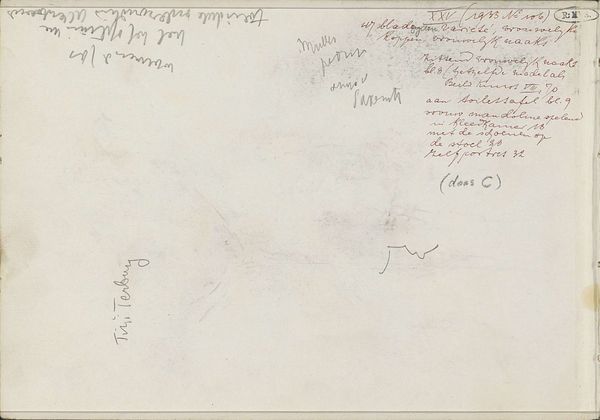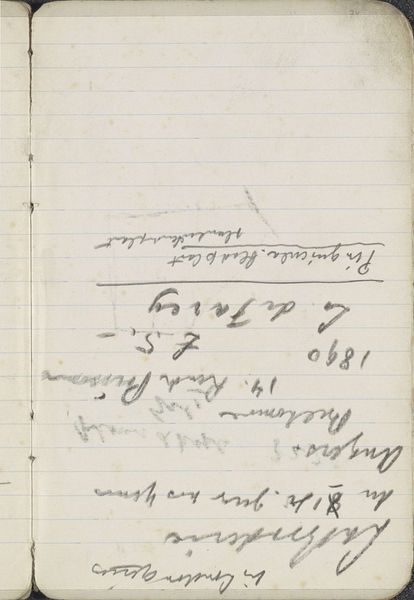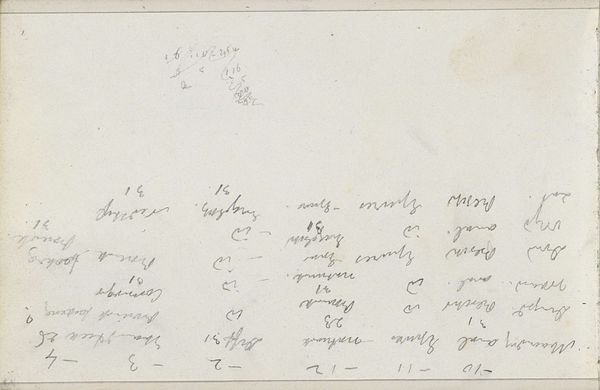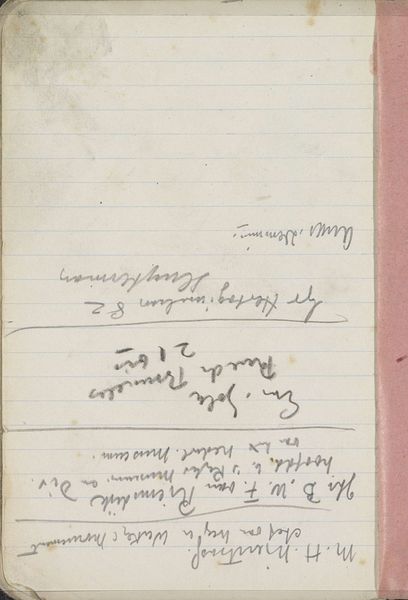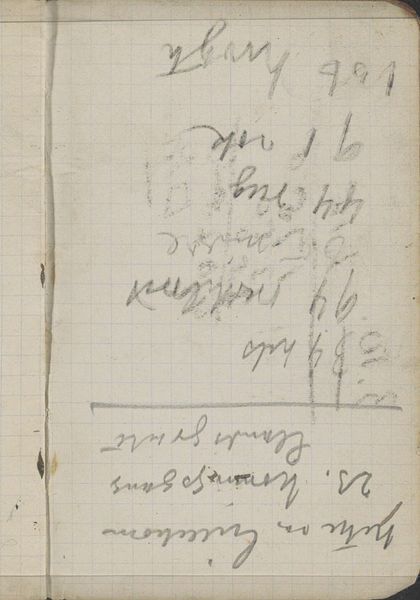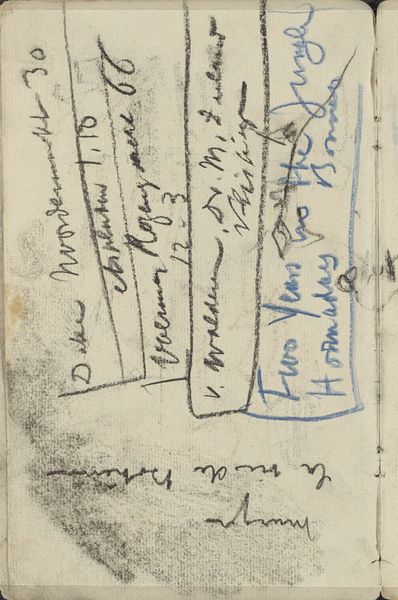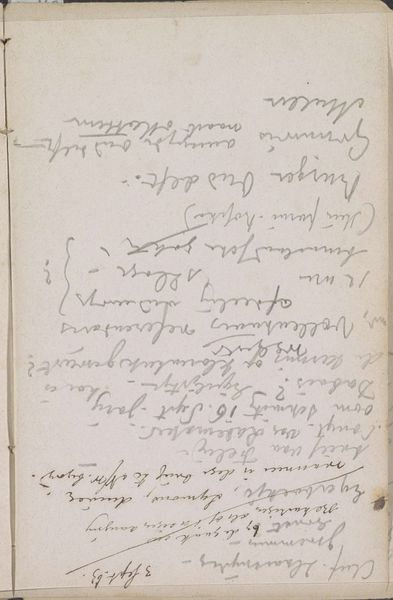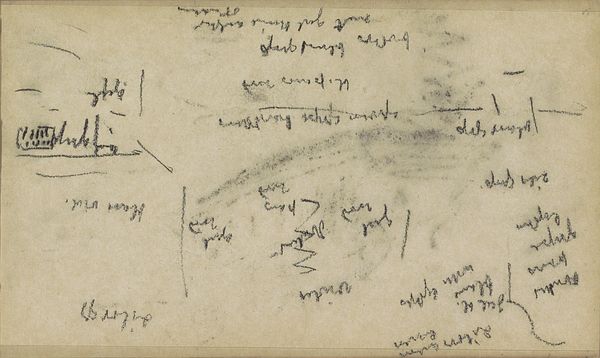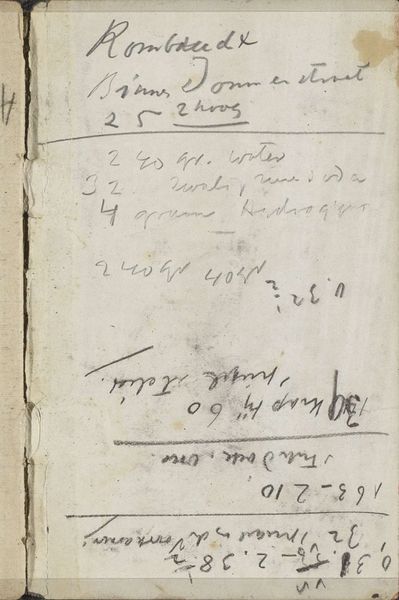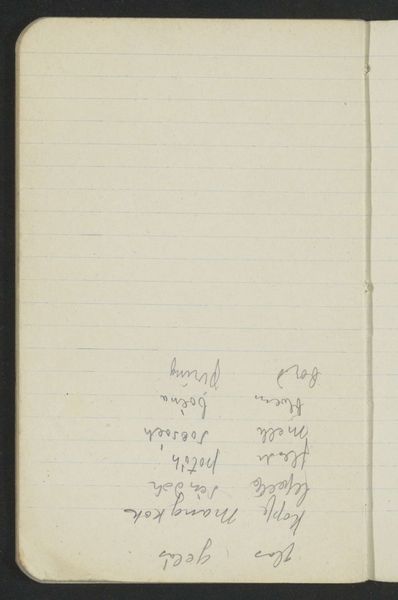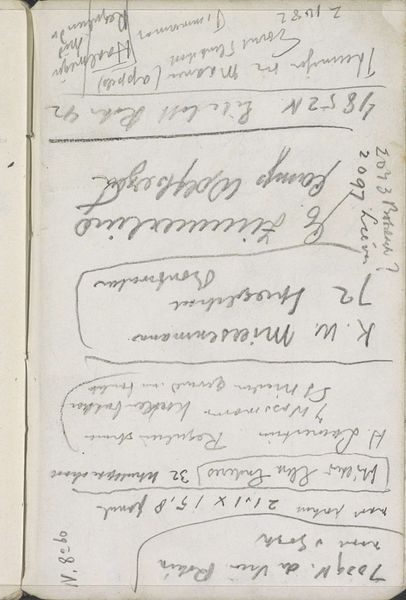
drawing, pencil
#
drawing
#
hand written
#
hand-lettering
#
hand drawn type
#
landscape
#
hand lettering
#
personal sketchbook
#
idea generation sketch
#
hand-written
#
hand-drawn typeface
#
romanticism
#
pencil
#
sketchbook drawing
#
sketchbook art
Copyright: Rijks Museum: Open Domain
Editor: This is "Huizen aan de Maas," or "Houses on the Maas," a pencil drawing by Johannes Tavenraat, made around 1840-1841. It feels like a quick sketch, maybe a study for a larger piece. It's got a light, airy quality despite being, ostensibly, about buildings. What catches your eye here? Curator: My immediate observation centers on the economy of line. Tavenraat masterfully uses a minimal number of strokes to suggest form and space. Note the distinct horizon lines – see how they subtly define the recession into depth? The varying pressure of the pencil creates a nuanced tonal range, suggesting volume without resorting to heavy shading. Editor: I see that now – the slightly darker lines give just enough definition. What about the writing scattered across the drawing? It seems almost integral to the composition. Curator: Indeed. The inclusion of text functions on several levels. Semiotically, it disrupts the pure representation of the landscape, reminding us that this is a constructed image, a mediation of reality. Structurally, it adds a layer of visual complexity, playing with the horizontality of the landscape and the verticality of the script. Consider, too, the texture it introduces, juxtaposing the organic flow of the landscape with the deliberate, crafted nature of the letters. Editor: That makes me think about the performative aspect of drawing itself; capturing and categorising. It also really highlights the material properties of the pencil on paper. So, would you say this drawing is less about depicting a specific place and more about exploring line, form, and the very act of drawing? Curator: Precisely. It invites us to appreciate the formal relationships within the image and the artist’s process, rather than simply recognizing the subject matter. Editor: That's a really helpful perspective; I often get caught up in trying to understand "what" the artwork represents and forgetting to appreciate "how" it represents.
Comments
No comments
Be the first to comment and join the conversation on the ultimate creative platform.
